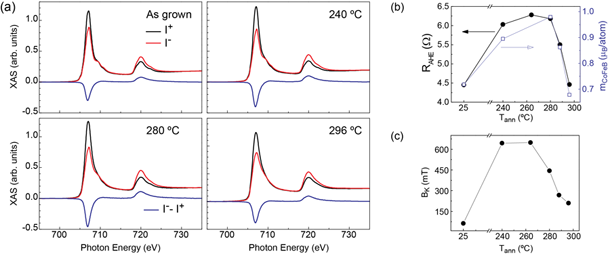Modern computing technology is based on writing, storing and retrieving information encoded as magnetic bits. Although the giant magnetoresistance effect (GMR) has improved the electrical read out of memory elements, magnetic writing remains the object of major research efforts. In the last decade, a lot of research has been focused at finding mechanisms and developing methods to control the reversal of the magnetic state of nanosized magnets by means of local electric fields, currents. These paths bring novel interplays between electric and magnetic components in devices which would allow conceptually new schemes for related technologies, attracting considerable interest for applications in spintronics, such as magnetic random access memories.
A fundamental reason justifying the relevance of this phenomenon is that provides a turnaround overcoming the basic applied problem of achieving the simple reversal of a high-coercivity, single-layer ferromagnet. "Materials with large coercivity and perpendicular magnetic anisotropy represent the mainstay of data storage media, owing to their ability to retain a stable magnetization state over long periods of time and their amenability to miniaturization. However, the same anisotropy properties that make a material attractive for storage also make it hard to write to", says Prof. Pietro Gambardella, formerly at ICN and now at ETH Zurich and leading one of the research teams carrying these investigations. He continues explaining that “the so-called spin-orbit fields (or torques) originate from the exchange of angular momentum between the crystal lattice and the magnetization and provide a route to control the magnetization of a single ferromagnetic layer without transferring spin momentum from a second ferromagnet. The detailed mechanisms giving rise to these torques are still debated, and in this study we wanted to shed some light on these phenomena. Our results evidence that transverse and longitudinal spin-orbit fields of the trilayer Ta/CoFeB/MgO have a complex behaviour depending on the annealing history of the sample and the magnetization direction. At the end, the probability of magnetization reversal depends on several factors, likely related to changes of the sample magnetization and anisotropy due to Joule heating as well as by current- and thermally assisted domain-wall nucleation and propagation”, continues Prof. Gambardella.
The samples investigated, Ta/CoFeB/MgO tri-layers, are widely employed to fabricate perpendicular magnetic tunnel junctions (MTJs). MTJs are planar Magneto-Resistance devices through which the flow of an electron current experiences a large or low resistance depending on the magnetic configuration of the device, and with the novelty of exploiting the Quantum Tunneling of electrons through an insulating layer with a thickness at the scale of a nanometer (i.e. of only a few atoms).
Post-deposition annealing of such tunnel junctions is critical to induce the crystallization of the initially amorphous CoFeB layer, optimize the perpendicular magnetic anisotropy, and increase the tunneling magnetoresistance.
According to Prof. Gambardella, X-ray measurements using BOREAS beamline for X-Ray Spectroscopy and Dichroism at ALBA Synchrotron (see figure 2) were important to establish that this behavior is related to the chemical and structural changes taking place in the samples, inducing significant variations of the magnetic moment and anisotropy of the layers.

Fig.1: :Left: (top) Device schematic with current leads for in-plane current-induced switching studies; (bottom) scanning electron micrograph of the sample showing lithographic electric terminals and circuitry required for Hall measurements (bottom) . Middle and Right: loop from one to another binary equilibrium magnetization states of the cobalt layer, and demonstration of magnetic state writing sequences via applied current. (taken from Nature magazine, doi:10.1038/nature10309)

Fig 2: (a) X-ray absorption and magnetic circular dichroism spectra of as-grown and annealed Ta/CoFeB/MgO trilayers measured at the Fe L2,3 edges at the BOREAS beamline (ALBA Synchrotron). (b) Correlation between anomalous Hall resistance and magnetic moments measured by XMCD. (c) Anisotropy field versus annealing temperature. (taken from Phys. Rev. B 89 214419 (2014))




